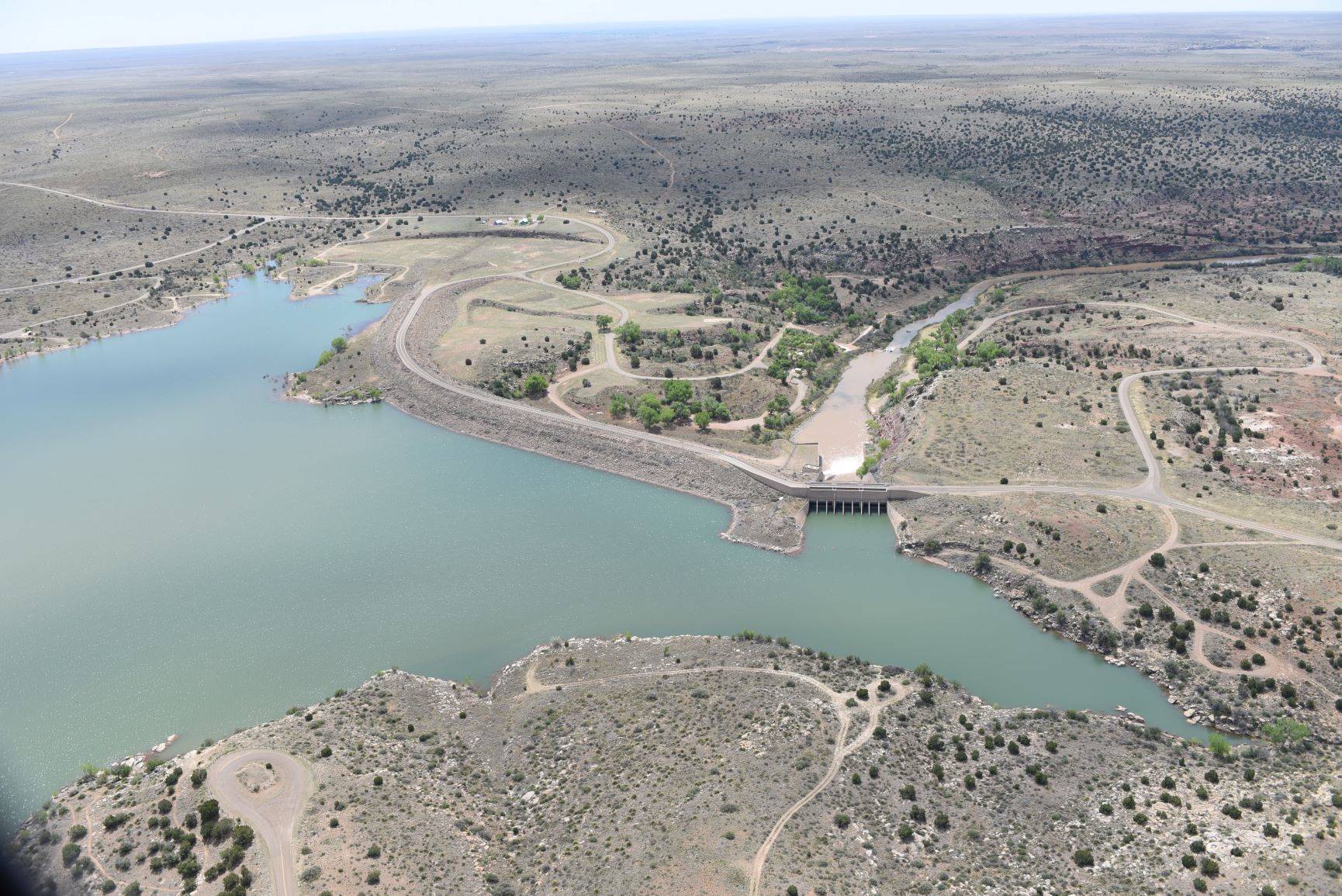Despite identified water shortages due to rising temperatures, irrigation districts and government agencies can take steps to reduce the effects within the basin
 Aerial photo looking at Lake Sumner and Sumner Dam flowing into the Pecos River
Aerial photo looking at Lake Sumner and Sumner Dam flowing into the Pecos River
ALBUQUERQUE, N.M. – The Pecos River Basin in New Mexico is likely to experience growing water shortages as temperatures continue to rise through the next 100 years. These gaps between water supply and demand were identified in a new study funded through the Bureau of Reclamation’s WaterSMART Basin Study Program.
The basin study shows that although precipitation trends are uncertain, snowpack and the water supply that it provides will likely continue to decrease due to the increasing temperatures. However, the irrigation districts and governments within the basin identified water efficiency improvements to irrigation methods, infrastructure and technology to better match water deliveries to documented needs.
"Reclamation and the NMISC partnered with irrigation districts in the Pecos River Basin to develop an understanding of the potential changes ahead in the watershed," said Reclamation Study Manager Dagmar Llewellyn. "This study provides an important roadmap for the Pecos Basin in New Mexico on the scale of changes that the irrigation districts will have to make to keep up with the hydrologic changes."
The study evaluated how changes in temperature, precipitation, evaporation, and irrigation demands may affect the basin hydrology and developed and modeled potential adaptations that irrigation districts could undertake in response to the projected gaps between water supply and agricultural demand.
The Pecos River Basin is an arid basin in eastern New Mexico and western Texas with a limited and highly variable water supply. The basin is primarily rural, and the largest water use is irrigated agriculture. In this study, Reclamation modeled impacts of changing hydrology and climate on the three largest irrigation districts in the basin: Fort Sumner Irrigation District and Carlsbad Irrigation District, which mostly depend on surface water from the Pecos River, and the Pecos Valley Artesian Conservancy District, which uses groundwater from the Roswell Artesian Basin.
Reclamation’s Albuquerque Area Office and the New Mexico Interstate Stream Commission performed the Pecos River-New Mexico Basin Study. View the full basin study at https://www.usbr.gov/watersmart/bsp. In addition, Reclamation will host a webinar at 11:00 a.m. MDT on Wednesday, October 20 to share the results of the study. To join the webinar, click here.
WaterSMART is the Department of the Interior's sustainable water initiative that uses the best available science to improve water conservation and help water resource managers identify strategies to narrow the gap between supply and demand. For more information on the WaterSMART program, visit https://www.usbr.gov/WaterSMART.
# # #
The Bureau of Reclamation is a federal agency under the U.S. Department of the Interior and is the nation's largest wholesale water supplier and second largest producer of hydroelectric power. Our facilities also provide substantial flood control, recreation opportunities, and environmental benefits. Visit our website at https://www.usbr.gov and follow us on Twitter @USBR; Facebook @bureau.of.reclamation; LinkedIn @Bureau of Reclamation; Instagram @bureau_of_reclamation; and YouTube @reclamation.

